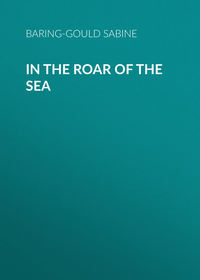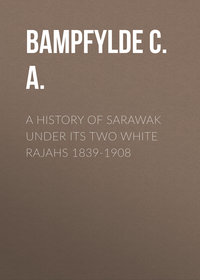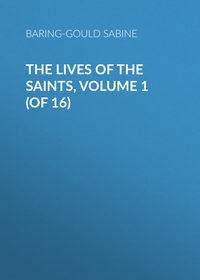 полная версия
полная версияCornish Characters and Strange Events
During many years a stream of tourists, walking, bicycling, motoring, has circulated round Cornwall, starting from Bideford, careering to the Land's End, and returning by the south coast to Plymouth, and hardly a tourist thought of visiting Falmouth without going to Burton's Curiosity Shop and making a purchase there. Indeed, he and his shop were some of the sights of Cornwall. He had by nature great ready wit, and a bluntness of manner which he cultivated, and which gave poignancy to dealings with him. But his bluntness, which was part of the stock-in-trade, was not infrequently carried too far, and became impertinence. He had a real love for his genuine curios, and parted with them reluctantly; and this he allowed to be seen. In this he was wholly unlike the ordinary dealer who presses his wares on the hesitating purchaser. When the present King, then Prince of Wales, visited Falmouth in 1887, the Prince having a cold sent Mr. Cavendish Bentinck to the Curiosity Shop to request that Mr. Burton would send a collection of what was most interesting in his shop for the Prince's inspection. Upon this he addressed the following letter to the Prince: —
"Respected Albert Edward. – I much regret to find you are indisposed. If I were to fetch to Kerrisvean a Pickford's wagon-load of samples it would be utterly impossible to convey the remotest idea of my ponderous conglomeration of curios; but if I could prevail upon Your Royal Highness to go through my shanty, I would give you local wit and humour which would throw you into a state of laughter, and there is every probability it would counteract your cold. – Yours until we meet in the next hotel,
"John Burton."This, which he doubtless thought very smart, was mere insolence. In fact, he had not a large store of "local wit and humour," and mistook rudeness for fun. But he was often encouraged in this. A lady once entered his shop and said, "You've a rum lot of stuff here, old boy; how much do you ask for that pair of vases?"
"Six guineas."
"I'll give you five, old fellow."
"Then, old girl, they are yours. Where shall I send them, and to whom?"
"To the Duchess of – ."
"Oh! I beg Your Grace's pardon; I have been too familiar."
"Not at all. You treated me as I have treated you."
John Burton was an abstemious man, and believed that by moderate diet and moderation in drinking he would – and any man would – live to the age of a hundred. He had framed for himself a code of rules to ensure a long life.
1. Eight hours' sleep and that on your right side, and sleep with the bedroom window open. Fresh air is essential.
2. Do not have your bedstead against the wall, so that the air may circulate about you freely.
3. Take a glass of hot water on rising, and a bath at blood temperature, and take exercise before breakfast.
4. Eat little meat and see that it be well cooked, and be careful to eat plenty of fat.
5. Take plenty of daily exercise in the open air.
6. Have no pet animals in your living-room.
7. Avoid tea – the tannin turns meat to leather and spoils digestion, but take little or no intoxicant.
8. Keep guard against man's three enemies, the three D's – Damp, Drains, and impure Drinking water.
9. Change of occupation, and frequent, if short, holidays.
10. Eat plenty of fruit and vegetables.
11. Keep your temper, and keep a cheery mind.
12. Limit your ambition to what you can do.
But, notwithstanding these rules, John Burton did not live to a great age. He died of a painful internal disease on May 28th, 1907. He had eight children by his wife. One son, John, has a large earthenware establishment in Falmouth; another – the image of his father in face – carries on the "Old Curiosity Shop."
THE FATE OF SIR CLOUDESLEY SHOVEL
The life of Sir Cloudesley Shovel, Knt. and Admiral, must be given in few words, as his association with Cornwall was in his death and not in his birth and life.
He was born about the year 1650, of parents in Norfolk in a humble condition of life, and he was made a cobbler's apprentice, but, disliking this profession, ran away to sea. He was at first a cabin-boy with Sir Christopher Mynns; but, applying himself to the study of navigation with indefatigable industry, his skill as a seaman soon raised him above that station. The corsairs of Tripoli had for long committed great depredations on the English in the Mediterranean, plundering and capturing merchant vessels and carrying off the crews into slavery. Sir John Narborough was sent in 1674 to reduce them to reason. As he had received orders to try the effects of negotiation before he proceeded to hostilities, he sent Mr. Shovel, who was at that time a lieutenant in his fleet, to demand satisfaction. The Dey treated him with disrespect, and sent him back without an answer. Sir John despatched him a second time, with orders to observe the position of the piratical fleet in the harbour. The behaviour of the Dey was as insolent as possible. Upon Mr. Shovel's return he informed Sir John that it would be possible, notwithstanding the batteries commanding the harbour, to cut out or burn the ships therein, and he volunteered to command an expedition in boats for the purpose. His offer was accepted, and he managed to burn in the harbour, under the castle and walls of Tripoli, the guard-ship and four men-of-war belonging to the pirates of that place, and to force the Dey to accept such conditions of peace as Sir John Narborough was pleased to impose on him.
Sir John Narborough gave so favourable an account of this exploit, that Shovel was soon after made captain of the Sapphire, a fifth-rate ship.
In the skirmish of Bantry Bay, 1689, he was engaged, and won such scanty laurels as the unworthy Admiral Herbert allowed his fleet to deserve. James II had his Court in Dublin. A French fleet, commanded by the Count de Château-Renaud, had anchored in Bantry Bay, and had put on shore a large quantity of military stores and money. Herbert, who had been sent to those seas with an English squadron for the express purpose of intercepting the communications between France and Ireland, sailed into the bay with purpose of giving battle. But the wind was unfavourable, and Herbert was without dash and energy, and was a traitor at heart. After some trifling discharge of gunpowder, which caused no serious loss of life on either side, he deemed it prudent to stand out to sea, and allow the French fleet to retire unmolested.
But according to Herbert's report, a great victory had been gained by him, and the House of Commons, believing what he stated, absurdly passed a vote of thanks to him. We may well conceive the rage of heart and scorn of his admiral that consumed Shovel at the feeble attack and cowardly retreat. At the time he was commander of the Edgar, and was soon after knighted by King William.
Next year he was employed in transporting an army into Ireland, a service which he performed with such diligence and dexterity that the King raised him to the rank of Rear-Admiral of the Blue, and delivered to him his commission with his own hands. Soon after he was made Rear-Admiral of the Red, and shared in the glory of the victory of La Hogue. In 1694 he bombarded Dunkirk.
In 1702 he was sent with a squadron of about twenty men-of-war to join the Grand Fleet, and bring home the galleons and other rich boats taken by the Duke of Ormond and Sir George Rooke at Vigo.
The next year he was promoted to a higher post, being appointed as Commander-in-Chief of the Confederate Fleet in the Mediterranean, consisting of thirty-five English and fourteen Dutch men-of-war. On entering the Leghorn roads, the Governor refused to accord a royal salute. Sir Cloudesley peremptorily ordered the salute to be given, or to expect all the guns of the fleet to ask the question why it had not been at once accorded. The threat sufficed. In this expedition Sir Cloudesley sent two men-of-war to endeavour to supply the Camisards of the Cevennes with money, arms, and ammunition, but failed to obtain communication with them.
Soon after the battle off Malaga he was presented by Prince George of Denmark to Queen Anne; she received him graciously, and the next year employed him as Commander-in-Chief.
In the month of June, 1704, he had his share in the honour of taking Gibraltar; and by his admirable conduct, bravery, and success in the sea-fight that happened soon after, between the Confederate and French fleets, obliged the enemy's van to bear away out of the reach of his cannon, and the Count of Toulouse to follow the example of his van, and escape out of danger. Although in this action Sir Cloudesley was second in command, yet he won the principal credit for its success, and some months after was appointed Rear-Admiral of England.
In 1705 he commanded the fleet, together with the Earl of Portsmouth, which was sent into the Mediterranean, and it was mainly owing to him that Barcelona was taken.
After an unsuccessful attempt upon Toulon he sailed for Gibraltar, and from thence on Michaelmas Day homeward with a part of his fleet, consisting of fifteen men-of-war, five of a lesser rank, and one yacht. He was on the Association, Sir George Byng was commander on the Royal Arms, Lord Dursley on the S. George.
On the 22nd of October Sir Cloudesley Shovel being enveloped in fog, and taking soundings in ninety fathoms, he brought to and lay by from noon till six o'clock in the evening, when, as the wind freshened and blew from the S.S.W., he made signal for sailing. The fleet steered E. by N. and supposing that they had the Channel open some of the ships ran upon the rocks of Scilly, before they were aware, about eight o'clock at night, and at once made signals of distress. The Association, in which was Sir Cloudesley Shovel, struck upon the rocks near the Bishop and his Clerks, and went down with all hands on board.
The same fate befell the Eagle and the Romney. The Firebrand was likewise dashed upon the rocks and foundered; but the captain and four-and-twenty of his men saved themselves in a boat. And Captain Sansom, who commanded the Phœnix, being driven towards the shore, was forced to abandon his ship to save his men. The Royal Arms was saved by great presence of mind in both Sir George Byng and his officers and men, who in a minute, on perceiving the rocks not a ship's length to leeward, as well as those on which Sir Cloudesley Shovel was lost, set her topsails and sheered off. Nor had Lord Dursley, commanding the S. George, a less fortunate escape; for his ship was dashed upon the same reef as that on which the Association had been wrecked; but the same wave that beat out the lights of Sir Cloudesley's vessel lifted the S. George and floated it away.
A story has remained deeply engraved in the minds of the men of Scilly to the present day. It is to this effect: —
On the 22nd October, that same fatal day, a sailor, a native of Scilly, ventured to approach the admiral and tell him that he was steering too far to the northward, and that unless the course of the fleet was changed they could not fail to run her upon the rocks. For this act of insubordination Sir Cloudesley ordered the presumptuous adviser to be hanged at the yard-arm of his ship, the Association; and the only favour granted him, in mitigation of his punishment, was a compliance with the poor fellow's request that, before execution of the sentence, he should be allowed to read a portion of Scripture. The prayer granted, he read the 109th Psalm in which occur the imprecations: "Let his days be few; and let another take his office. Let his children be fatherless, and his wife a widow… Let his posterity be destroyed, and in the next generation let his name be clean put out. Because his mind was not to do good, but persecuted the poor, helpless man, that he might slay him that was vexed at the heart."
The report of this atrocious act could have been communicated by only one man who was said to have escaped alive out of the crew of the Association. Now happily we know that no man was saved out of that vessel. The one man who was saved was George Laurence, quartermaster of the Romney, a North-countryman from near Hull, and a butcher by trade. Of him we learn something from the account of Mr. Edmund Herbert, Deputy Paymaster-General of the Marine Regiments, who was in Scilly in 1709, sent there with the object of trying to recover some of the property lost in the wreck, which had taken place two years before.
This fellow, says Herbert, was "a lusty fat man, but much battered with the rocks. Most of the captains, lieutenants, doctors, etc., of the squadron came on shore and asked him many questions in relation to the wreck, but not one man took pity on him, either to dress or order to be dressed his bruises, etc., whereof he had perished had not Mr. Ekins, a gentleman of the island, charitably taken him in; and a doctor of a merchant ship then in the road under convoy of Southampton searched his wounds and applied proper remedies."
Now it is obvious that this man could say nothing relative to what had happened on the Association. But we arrive at the origin of the story from what Herbert relates, and he alone. He says: "About one or two after noon on the 23rd (22nd) October Sir Cloudesley called a council and examined the masters what latitude they were in; all agreed to be in that of Ushant, on the coast of France, except Sir W. Jumper's master of the Lenox, who believed them to be nearer Scilly, and that in three hours (they) should be up in sight thereof. But Sir Cloudesley listened not to a single person whose opinion was contrary to the whole fleet. (They then altered their opinion and thought themselves on the coast of France, but a lad on board the – said the light they made was Scilly light, though all the ship's crew swore at and gave him ill language for it; howbeit he continued in his assertion, and that which they made (to be) a sail and a ship's lanthorn proved to be a rock and the light afore mentioned, which rock the lad called the Great Smith, of the truth of which at daybreak they were all convinced.)"
This is the small egg out of which so large a fable has hatched forth. The boy was probably drowned, and his parents or relations on Scilly, angry that his advice had not been taken and so the wreck avoided, felt resentment against Sir Cloudesley on this account, and little by little magnified the incident, and transmuted it from an error of judgment into a crime.
Beside Sir Cloudesley on board the Association were Lady Shovell's two sons by her first husband, Admiral Sir John Narborough. These were Sir John Narborough, Bart., and his brother James; Edmund Loader, the captain; also a nephew, the son of her first husband's sister; Henry Trelawny, second son of the Bishop of Winchester; and several other young gentlemen of good family.
After that Sir Cloudesley had adopted the prevailing opinion that the squadron was off Ushant; he detached the Lenox, La Valeur, and the Phœnix for Falmouth, with orders to take under convoy the merchant vessels waiting there bound eastward. These ships, following a north-easterly course, as had been determined on, soon found themselves among the myriad rocks and islets that lie to the south-west of the Scilly group, where the Phœnix sustained so much damage that her captain and crew only saved the ship and themselves by running her ashore on the sands between Tresco and S. Martin's Islands. The Lenox and La Valeur were fortunately able to beat through to Broad Sound, an anchorage to the west of the principal islands, where they remained till break of day on the ensuing morning. Then they discovered where they were, and sailed for Falmouth, in the direction in which they now knew that it lay, and arrived there on the 25th, bringing news of the wreck of the Phœnix, but knowing nothing of the mishap to the vessels of the squadron from which they had been detached.
J. Addison, in a letter dated October 31st, 1707, wrote: "Yesterday we had the news that the body of Sir Cloudesley Shovel was found on the coast of Cornwall. The fishermen, who were searching among the rocks, took a tin-box out of the pocket of one of the carcasses that was floating, and found in it the commission of an Admiral, upon which, examining the body more closely, they found it was poor Sir Cloudesley. You may guess the conditions of his unhappy wife, who lost, in the same ship with her husband, her two only sons by Sir John Narborough."
In an article on Sir Cloudesley by Mr. S. R. Pattison, in the Journal of the R. Inst. of Cornwall, October, 1864, he says: "On a recent visit to the site of Sir Cloudesley's first burial place, on the inner shore of Porthellic Cove, we were informed by our guides – fishermen and pilots – that the body of the unfortunate Admiral when washed ashore was on a grating, on which was also the dead body of his faithful Newfoundland dog. They are said to have been found, early in the morning after the wreck, by a woman named Thomas, then living at Sallakey farm – a short distance from the Cove. Mrs. Thomas immediately gave information and procured assistance from Sallakey, and the body of the unfortunate hero was buried at the inmost part of the Cove, near the junction of the shingle and the herbage, but within and at right angles with the latter. And here it remains, conspicuous from no inconsiderable distance, without a particle of verdure to obscure the brilliancy of the white shingle which occupies its space, in marked contrast with the dense herbage by which it is surrounded on three of its sides. Our guides asserted that this strange appearance of the grave is due to an imprecation uttered upon Sir Cloudesley a few hours previous to the wreck, and (as they, with other Scillonians, superstitiously believe) with more than human power of prophecy. The islanders assert that ever since the body of a cruel tyrant, as they deem the hero, rested in this grave, grass has never grown upon its surface, and they are confident it never will grow there."
"Sir Cloudesley Shovel's body being the next day after this misfortune taken up by some country fellows, was stripped and buried in the sand. But on inquiry made by the boats of the Salisbury and Antelope, it was discovered where he was hid; from whence being taken out, and the earth wash'd off, he appeared as fresh as if alive, tho' he had lain interr'd from the 23rd to the 26th, on which day he was brought on board the Salisbury, embowell'd, and the 28th of that month brought into Plymouth, from whence he was afterwards carried to London. This was the fatal end of one of the greatest sea-commanders of our age, or, indeed, that ever this island produced. Of undaunted courage and resolution, of wonderful presence of mind in the hottest engagements, and of consummate skill and experience. But more than all this, he was a just, frank, generous, honest, good man. He was the artificer of his own fortune, and by his personal merit alone, from the lowest, rais'd himself almost to the highest station in the navy of Great Britain."37
But we have a much more detailed and accurate account of the finding of the body in the narrative of Mr. Edmund Herbert: I do not give the contractions as in the original. "Sir Cloudesley Shovell [was] cast away October 23rd [actually on the evening of the 22nd], being Wednesday, between six and seven at night, off Guilstone, [and] was found on shoar [at Porthellick Cove] in S. Marie's Island, stript of his shirt, which by confession was known to have been done by two women, which shirt had his name at the gusset at his waist; where by order of Mr. Harry Pennick, [it] was buried four yards off the sands; which place I myself viewed, and as [I] was by his grave, came the said woman that first saw him after he was stript. His ring was also lost from off his hand, which last, however, left the impression on his finger, as also of a second. The Lady Shovell offered a considerable reward to any one [who] should recover it for her, and in order thereto wrote Captain Benedick Dennis, Governor and Commander-in-Chief of the Islands of Scilly, giving him a particular description thereof, who used his utmost diligence, both by fair and foul means, though could not hear of it. Sir Cloudesley had on him a pair of thread stockings and a thread waistcoat. Mr. Child [Paxton] of the Arundell caused him to be taken up, and knew him to be Sir Cloudesley by a certain black mole under his left ear, as also by the first joint of one of his forefingers being broken inwards formerly by playing at tables; the said joint of his finger was also small and taper, as well as standing somewhat inwards; he had likewise a shot in his right arm, another in his left thigh. Moreover, he was well satisfied that it was he, for he was as fresh when his face was washed as if only asleep; his nose likewise bled as though alive… Many that saw him said his head was the largest that ever they had seen, and not at all swelled with the water, neither had he any bruise or scar about him, save only a small scratch above one of his eyes like that of a pin. He was a very lusty, comely man, and very fat."
Nearly 1800 lives were lost in this disastrous shipwreck. The Association, the Eagle, and the Romney were totally lost with every soul on board save the one we have already heard of. The Firebrand had struck and foundered, but her captain and seventeen men were saved in a boat, and two more of her crew got on shore on pieces of the wreck.
Sir Cloudesley's was the first body that came on shore, and there was a woman who at once stripped it and robbed it of its rings. One of these was a fine emerald set with diamonds, which is said to have been given to the Admiral by his intimate friend and comrade, James Lord Dursley, who so nearly shared his fate in the S. George. Although strict inquiries were made for this ring, no tidings could be heard of it. Lady Shovel then granted a pension for life to the woman and her husband who had found the body. Many years after a terrible confession was made by a dying woman to a clergyman of S. Mary's Island. She said that the Admiral had been cast ashore exhausted and faint, but still living, and that she had squeezed the life out of him for the sake of his clothes and his rings. She produced the long-missing emerald hoop, and gave it to the clergyman, saying that she had been afraid to sell it lest it should lead to a discovery of her guilt, and she added that she could not die in peace until she had made this full confession. This disclosure was made between the years 1732 and 1736, after the death of Lady Shovel. The ring was sent to Lord Dursley, who became Earl of Berkeley in 1701, and from him it descended to his grandson, Sir George Cranfield Berkeley, and in the possession of one of his descendants it still remains, but has unfortunately been converted into a locket.38
The History of the Reign of Queen Anne, 1708, says that on "December 23rd was performed the interment of Sir Cloudesley Shovell, whose body, after having lain in state for many days, at the Queen's expense, was conveyed from his late dwelling-house in Soho Square, to the Abbey of Westminster, where it was buried with all pomp and magnificence suitable to her Majesty's high regard to the remains of so brave and faithful a commander. There were at the ceremony the Queen's trumpets, kettle-drums, and household drums, with other music; the Queen's and the Prince's watermen in their liveries, most of the nobility's coaches with six horses, and flag-officers that were in town, and the Prince's Council, the Heralds-at-Arms, and the Knights' Marshal men."
Sir Cloudesley, by his wife, the widow of Sir John Narborough, left two daughters, of whom the elder, Elizabeth, married first, 1708, Sir Robert Marsham, Bart., who was created Baron Romney in 1716; and, secondly, Lord Carmichael, afterwards Earl of Hyndford. The second daughter, Anne, married in 1718 the Hon. Robert Mansel; and, secondly, John Blackwood, Esq., by whom she had Shovell Blackwood, of Pitreavie, Fife, N.B., and of Crayford, Kent, and a daughter.
Elizabeth, who married Sir Robert Marsham, had issue Robert, second Baron Romney, and the Hon. Elizabeth Marsham, who married Sir Jacob Bouverie, third Baronet, created Viscount Folkestone in 1747, as his second wife, and by him had the Hon. Philip Bouverie, who assumed the name of Pusey, and so became the ancestress of Dr. Pusey.









